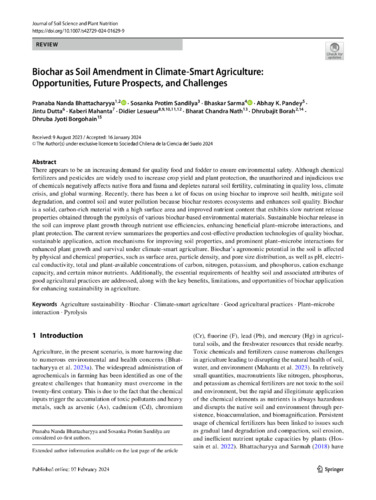There appears to be an increasing demand for quality food and fodder to ensure environmental safety. Although chemical fertilizers and pesticides are widely used to increase crop yield and plant protection, the unauthorized and injudicious use of chemicals negatively affects native flora and fauna and depletes natural soil fertility, culminating in quality loss, climate crisis, and global warming. Recently, there has been a lot of focus on using biochar to improve soil health, mitigate soil degradation, and control soil and water pollution because biochar restores ecosystems and enhances soil quality. Biochar is a solid, carbon-rich material with a high surface area and improved nutrient content that exhibits slow nutrient release properties obtained through the pyrolysis of various biochar-based environmental materials. Sustainable biochar release in the soil can improve plant growth through nutrient use efficiencies, enhancing beneficial plant–microbe interactions, and plant protection. The current review summarizes the properties and cost-effective production technologies of quality biochar, sustainable application, action mechanisms for improving soil properties, and prominent plant–microbe interactions for enhanced plant growth and survival under climate-smart agriculture. Biochar’s agronomic potential in the soil is affected by physical and chemical properties, such as surface area, particle density, and pore size distribution, as well as pH, electrical conductivity, total and plant-available concentrations of carbon, nitrogen, potassium, and phosphorus, cation exchange capacity, and certain minor nutrients. Additionally, the essential requirements of healthy soil and associated attributes of good agricultural practices are addressed, along with the key benefits, limitations, and opportunities of biochar application
for enhancing sustainability in agriculture.
Bhattacharyya, P.N.; Sandilya, S.P.; Sarma, B.; Pandey, A.K.; Dutta, J.; Mahanta, K.; Lesueur, D.; Nath, B.C.; Borah, D.; Borgohain, D.J.

